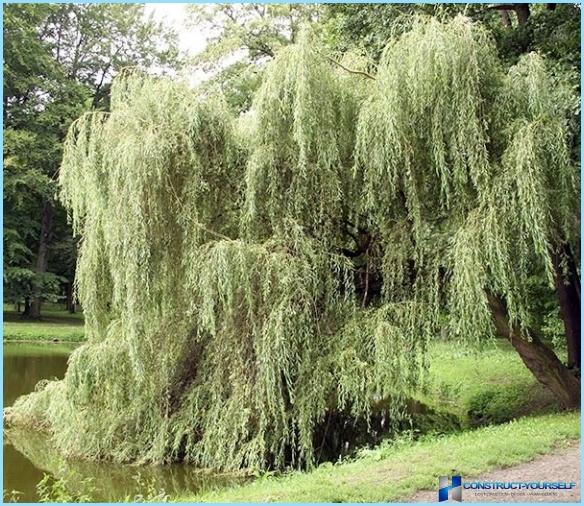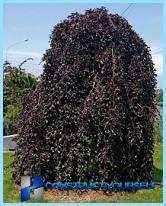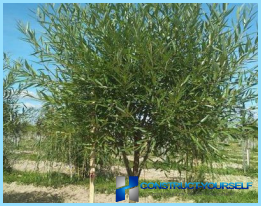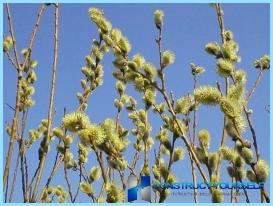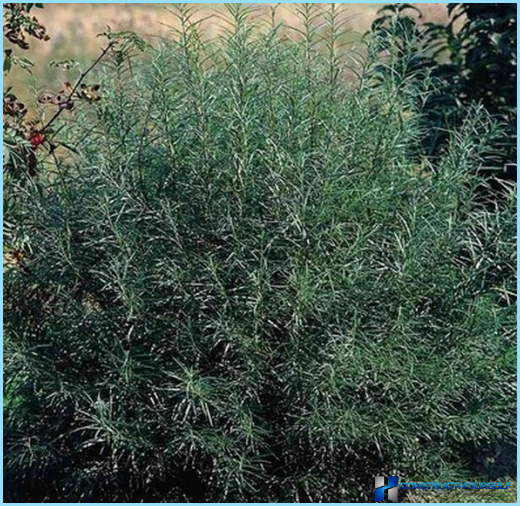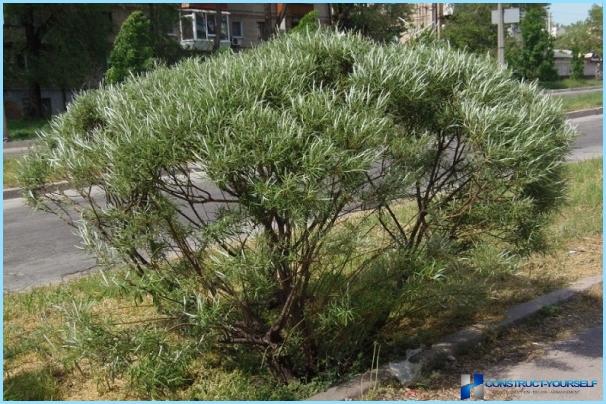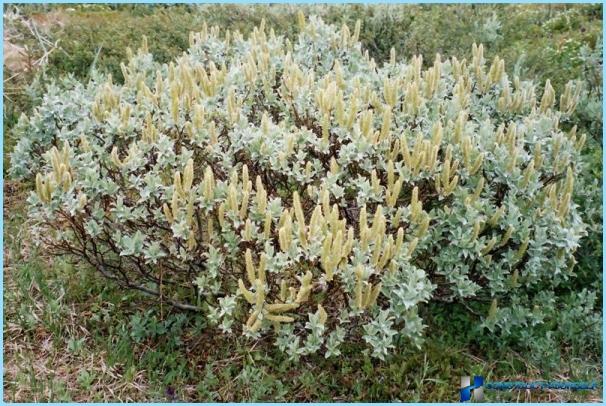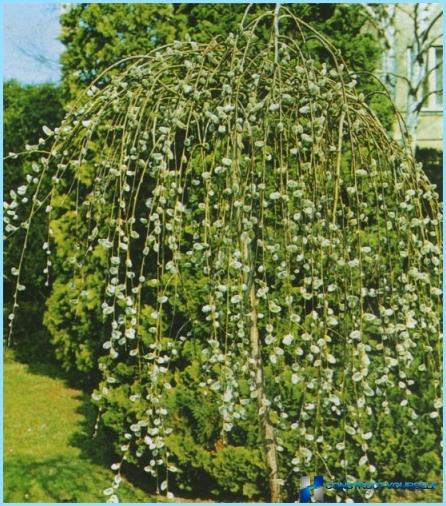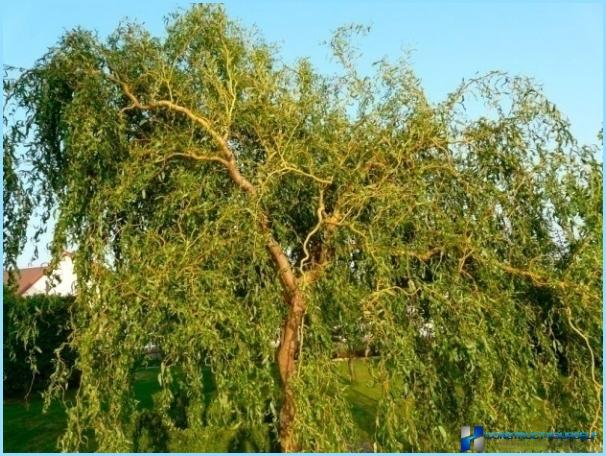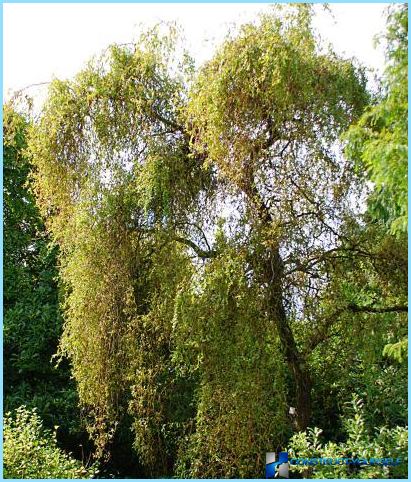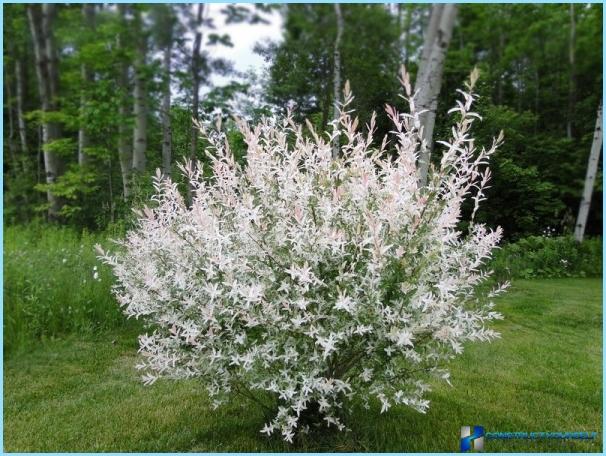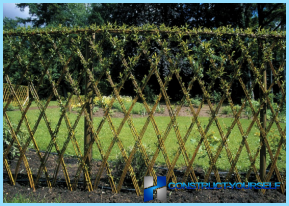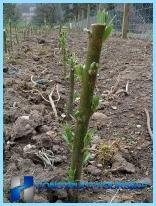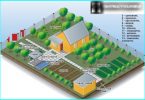The contents
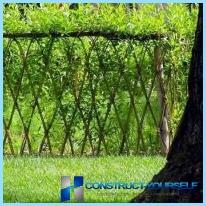
Everyone strives for the beautification of your home. Many seek to protect their territory from external stimuli: noise of the street and cars, wind, unwanted prying eyes. Also very few people like high solid fences. The ideal solution would be a hedge of willow! It does not disturb the overall beauty, organically fit into the landscape and will make your possession not available to outsiders. Besides this kind of fencing is one of the most economical.
A great advantage of the fence of willow is that she looks attractive all year round. The plant is undemanding in care. Throughout the year, it will begin to grow a thick wall. A hedge of willows are easy to make and it will look very nice. Graceful cascading branches will transform and beautify your yard.
Varieties of willow ↑
Few people choose willow for hedges, because few people know that it can be used in a similar way. Varieties of willow in the nature of more than 500. They all differ in color of leaves, foliage, and size. It can be dwarf or tall, maybe even to creep along the ground. Choose what you prefer.
You can create a living fence from willow with his own hands of the most practical and aesthetically pleasing species of this plant, see photo:
- white willow, it is also called weeping. Likes humidity and is ideal for a large garden. Can reach a height of about thirty feet;
- purple willow – shrub blooming (about four meters), has leaves blue or purple color;
- Holly willow, people call her willow. Grows up to eight meters. Has subtypes: shrub and tree. Resistant to drought;
- steppe willow – a shrub that grows up to 2 meters. Resistant to moisture and to drought;
- basket willow is a large tree about eight feet. Leaves with a hint of silver and likes moisture;
- hairy willow – small tree not more than a meter. Tolerates to low temperature;
- goat can reach ten to fifteen meters. It is easy to determine the gender of individuals, if the spring has earrings red color;
- matsudana – this Chinese willow, unusual curved shoots, may be about eight feet, does not like cold;
- Sakhalin – like matsudana, but easier to tolerate the cold. Likes moisture;
- Manchurian – Japanese willow, globular crown and pink sheets. Likes humidity.
Planting willow ↑

You can conduct your own planting hedges of willow, photos and recommendations will help you with this. IVA – this is a rare shrub that can be propagated by cuttings and layering. The plant quickly takes root and develops. Only the first time the sprouts will be weak, so you need to monitor the weeds and timely remove them.
If you have decided to prepare the shoots, do it in the fall or spring. If you think to buy, you should know that to plant willow in the form of seedlings several months: from late spring to October. But if you purchased the cuttings without basal feed, they must be planted in the spring. IVA survives very well, you can be sure that almost all germinate seedlings or cuttings.
So, what made a hedge of willows? Follow a proven methodology:
- swipe markup. Mark the places where you will be spending on the fence. It is best to drive the pegs on them to stretch the rope. Use imagination! The line can be straight or with bends, you can put willow in two rows, it all depends on your desires;
- make the hole under the plant, the depth should be about half, as less if the seedlings are small, and more. If the soil is heavy, add sand. It is recommended to add in the planting hole the mixture of soil and manure or compost and peat. Make the earth loose and pour it;
- make frame. Prepare the perch, which in the future will tie the shoots. Make them from high, as the willow will grow. Stretch the rope between them;
- in the process of planting, distance between plants should be about twenty centimeters. Set them straight or at an angle according to their desire;
- tightly and firmly with a soft cloth, tie the shoots to the poles;
- don’t forget to water and pull weeds. The first time, need special care to keep unnecessary grass not bothered to sprout sprouts.
- Later you will be able to twist the shoots of the willow together so the fence will become stronger. Don’t forget to support growth with the frame, increase it as needed. Willow is notable for the fact that you can direct its growth themselves. The following video will help you to grow a living fence from willow with their hands.
How to provide proper care for a living fence of willow ↑
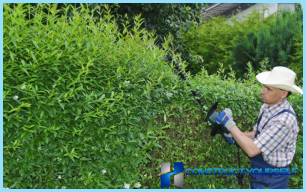
Take care of willow is quite simple. The first year sure that nothing prevented the seedlings to grow. Don’t forget about watering if the summer is dry do this once a week if wet, time in two weeks.
In the summer it is advisable to fertilize it comprehensively, it is sufficient to do only once per season. Fall make superphosphate.
Remove the leaves that fall in autumn. If Eva is not resistant to cold, in winter you need to cover. Watch your hedge by trimming it to the desired size twice a year in spring and summer.
If you chose standard forms of willow, then over time you will need to remove the shoots near the root and rootstock.
Thanks to the detailed instructions in this video, you can easily make a hedge of willow:
Undeniable advantages of the fence of willow ↑
- Easy planting. Provided photo and video will help you to choose the kind of willow for hedges. Practical recommendations will be your guide to action, and a year later, you become the owner of beautiful and exclusive hedge of willow;
- IVA protects from the wind and from the noise coming from the street;
- simplicity to extremes of temperature and humidity (most types);
- such a fence will serve you for at least twenty years, maybe fifty;
- fallen leaves perfectly improves the soil and has a positive effect on the environment;
- a large number of types for every taste and color;
- the fence does not require a strong time and financial cost of care. All you need to pay attention to the fence only a couple of times a year.
- aesthetics. Instead of a blind fence you’ll make a great living fence, which will delight the eyes and to perform all protective functions.

